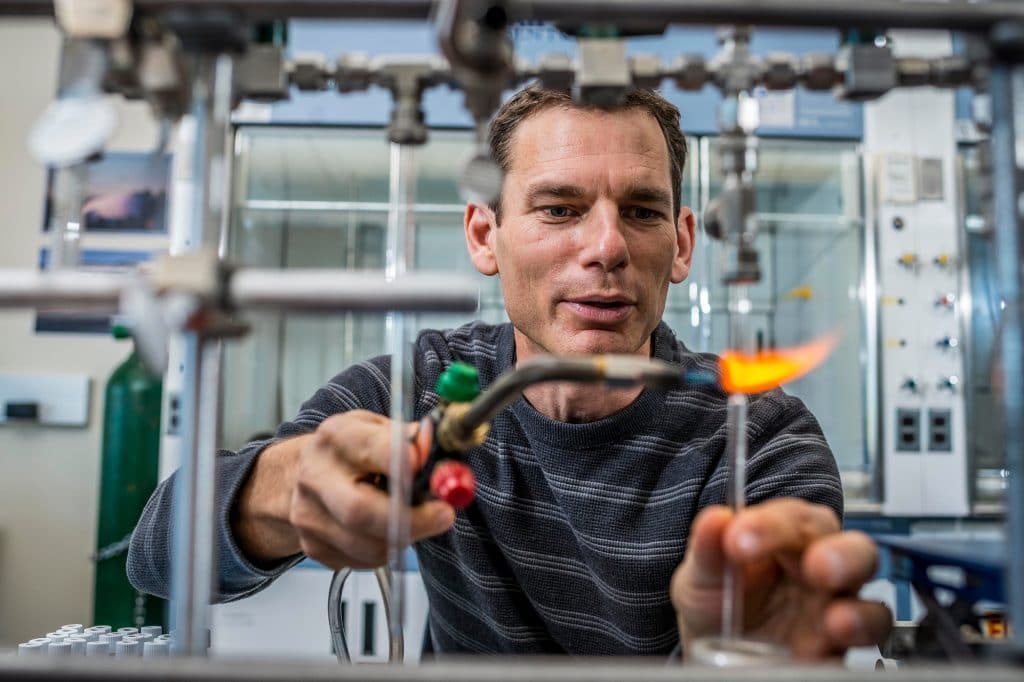New long-term data from a permafrost monitoring site in Healy, Alaska, suggest it was a net carbon source to the atmosphere at least since 2004 and, under current climate conditions as the region grows warmer, will continue to be one, potentially losing up to a fifth of all carbon stored in the active layer of soil by the end of the century. Ted Schuur, a professor in Northern Arizona University’s Center for Ecosystem Science and Society, assistant professor Christina Schädel and lab members Chris Ebert, Justin Ledman, Heidi Rodenhizer, Gerardo Celis, Elaine Pegoraro, Marguerite Mauritz and Meghan Taylor teamed up with other experts to analyze 15 years of data on thawing permafrost collected at Eight Mile Lake outside of Healy. The resulting study, “Tundra Underlain by Thawing Permafrost Persistently Emits Carbon to the Atmosphere Over 15 Years of Measurements,” was recently published in the journal Biogeosciences.
Permafrost underlies nearly a quarter of the land surface in the northern hemisphere, but warming temperatures and changing climate conditions have slowly degraded the overall amount left perennially frozen. These are far from frozen wastelands. Permafrost soils support both microbial and plant life and are often blanketed in thick mosses and shrubs. As permafrost thaws, microbes release stored carbon from the formerly frozen soil into the atmosphere, while plants can potentially offset some of this release with faster growth. The rapid warming of the Arctic makes long-term monitoring of these carbon stores critical to predicting how the region will affect future climate conditions worldwide.
“Because this landscape is changing so dramatically as the north warms, it’s important we track carbon loss and uptake from year to year and across decades,” said Schuur, who led the team. “If the ecosystem is ‘breathing in’ CO2 as new plants grow but also ‘breathing out’ CO2 from microbes and plants in the newly thawed permafrost, are they breathing in and out equally? Do we see trends with year-to-year differences in temperature and precipitation, and what are the long-term implications of these patterns? Over the 15 years we looked at, despite some really productive periods of plant growth, the CO2 release outpaced uptake most years.”
Schuur has studied the Eight Mile Lake region for 19 years. In 2003, researchers set up a series of chambers to measure the uptake and release of carbon dioxide and other gases along with ancillary measurements of temperature, humidity and other factors. The current study examines carbon fluxes. Previous short-term results estimated that 9-13 percent of the currently stored carbon will be released by 2100, and the current study with a much longer data set confirms that amount, with the potential for even greater loss.
“These results emphasize the importance of consistent measurements over longer periods. Individual years only provide snapshots and not necessarily the whole story,” Schädel said. The analysis also revealed air temperatures in the last three years sat at or above zero degrees, the threshold for maintaining permafrost representing unprecedent conditions in this ecosystem.”
Learn more about long-term permafrost carbon monitoring and the impact on climate change at the Permafrost Carbon Network.
Stephanie Mayer and Kate Petersen | Center for Ecosystem Science and Society




